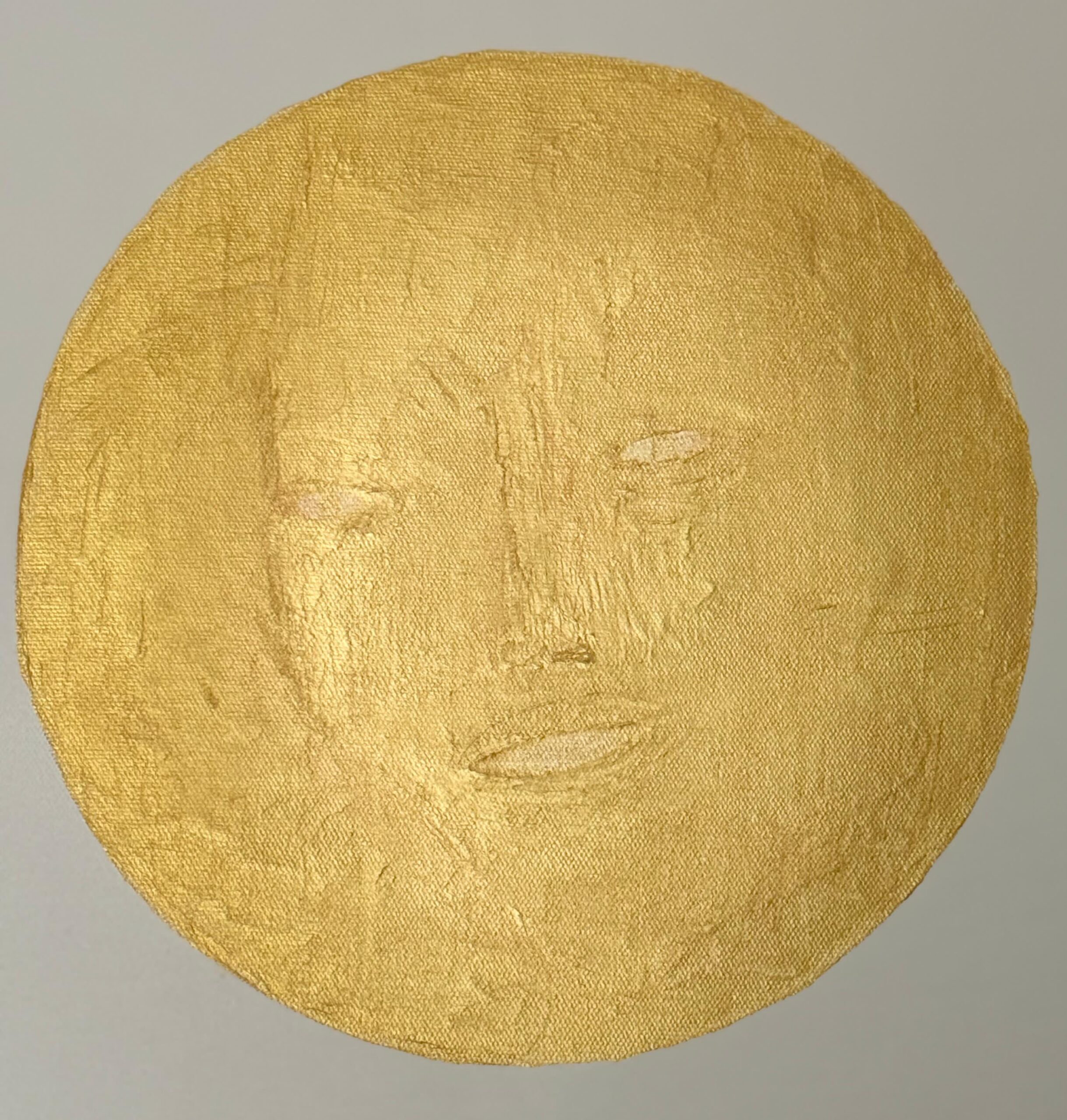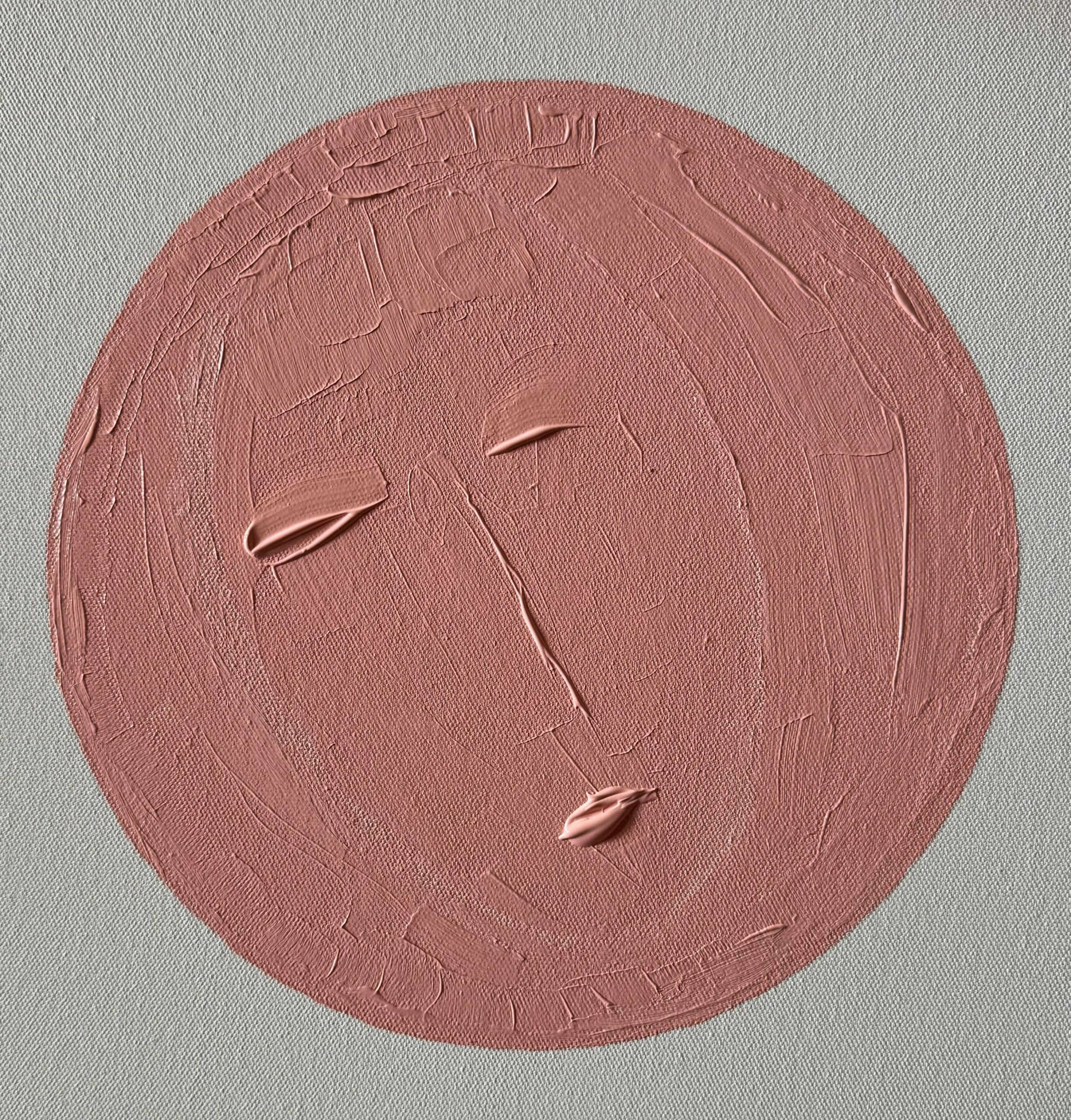
“Emptiness is form, form is emptiness.”—Heart Sutra
Believing in a fixed, inherent self and considering transient phenomena as enduring reality is the ultimate cause of suffering. Understanding emptiness becomes vital for liberation from suffering and samsara—the cycle of birth and death. One can free oneself from these delusions and attain enlightenment by realising the emptiness of all things.
When I stared at the empty canvas, I had no clue what I was going to paint. I started by making a circle and filling it with paint and it started taking a form. Each time a new form took shape on the canvas I felt mesmerized. I started enjoying the process.
This experience took me back to my birthplace in Rajgir (ancient Rajgriha), Bihar, where Boddhisatva Avlokiteshvara had spoken these words to Sariputra on the Gridhakuta Parvat (Vulture’s Peak)—
“Form is emptiness and emptiness itself is form;
emptiness is nothing but form,
and form is nothing but emptiness;
that which is form is emptiness,
and that which is emptiness is form
So are sensation, perception, volition and consciousness
Thus, Sariputra, all things have the character of emptiness;
they are neither born nor cease;
they are neither pure nor impure,
neither incomplete nor complete.”
These paintings are visualizations of emptiness. Forms are visible when one looks at them closely but as one moves away from them, forms disappear and what remains is emptiness, a true validation of the crux of Heart Sutra -‘form is emptiness, emptiness is form.’
The forms that appear are mere approximations of figures familiar and unfamiliar, gods and goddesses, mortals and immortals, plants and animals. They are all transient. They appear and then vanish. Emptiness remains.
The form of a circle and sphere transcends Earth and becomes a universal form representing celestial bodies, stars (including our own Sun, the source of life) planets, and black holes (symbolising death).
German philosopher Schopenhauer, in the final words of his main work, compared his doctrine to the Sunyata of the Heart Sutra. Schopenhauer wrote: “…to those in whom the will [to continue living] has turned and has denied itself, this very real world of ours, with all its Suns and Milky Ways, is — nothing.” To this, he appended the following note: “This is also the Prajna–Paramita of the Buddhists, the ‘beyond all knowledge,’ in other words, the point where subject and object no longer exist.”
Further elaborating on the concept of emptiness Mohini Kent writes —“The insightful wisdom is the comprehension of the emptiness of all phenomena. Shunyata, or emptiness, in Buddhism, refers to the fact that nothing has ultimate immutable substance. Nothing has an independent existence, nothing is permanent. Everything in the world is in a state of change and transformation. Understanding this leads to wisdom and cessation of suffering that comes from the attachment of the ego to ‘me’ and ‘mine’, resistance to change, and grief over loss.”
I have tried to visualise this state of continuous transformation of emptiness into form and form into emptiness through these 26 paintings evoking diverse moods, rasas, and forms, but unified with an underlying theme of emptiness.
*The writer is an acclaimed poet, painter and an Indian diplomat








